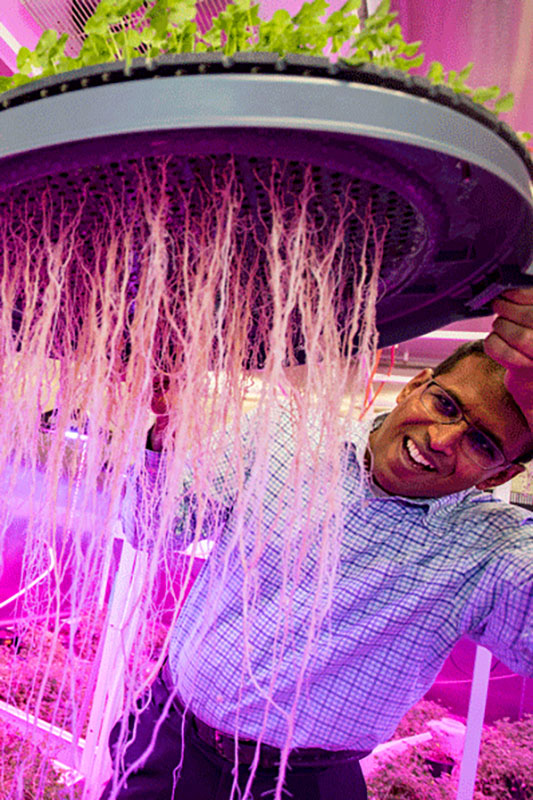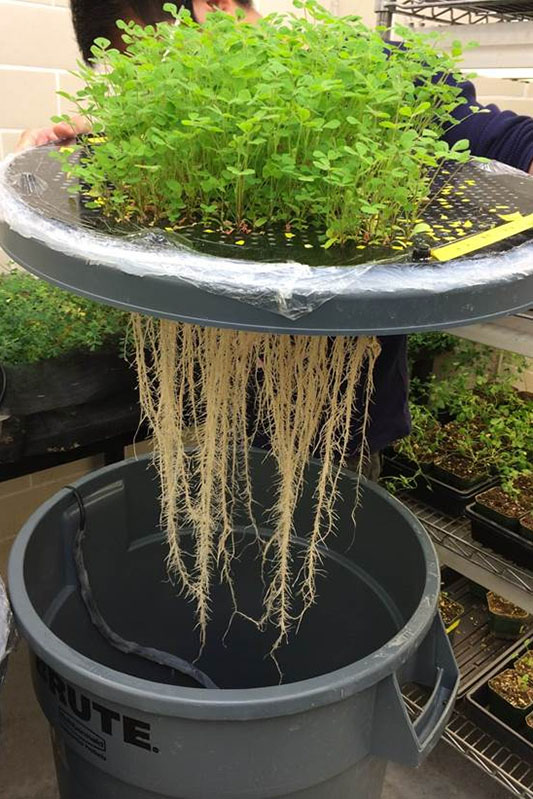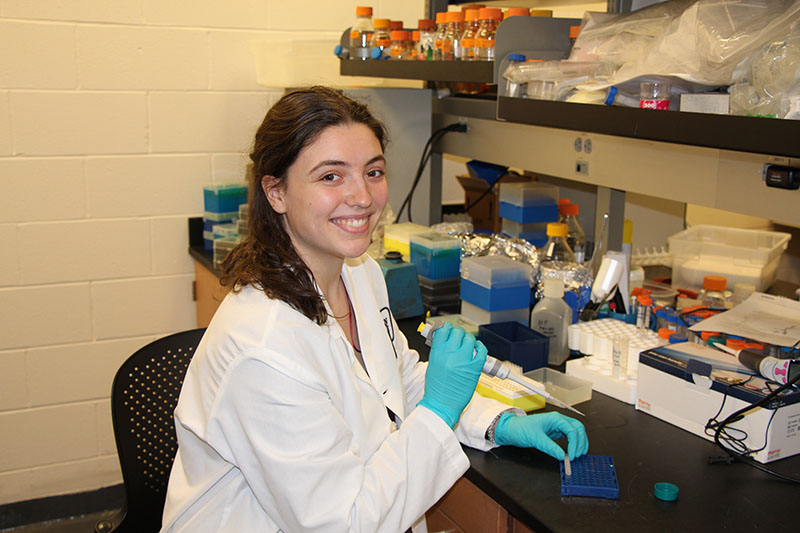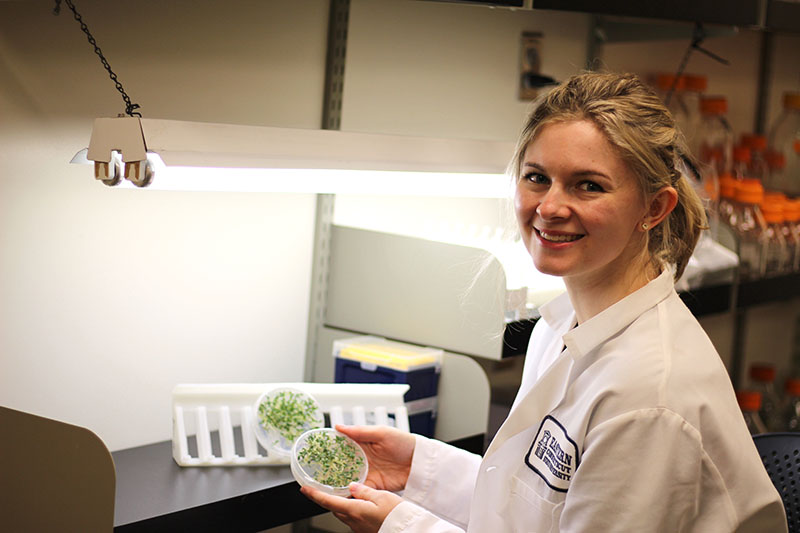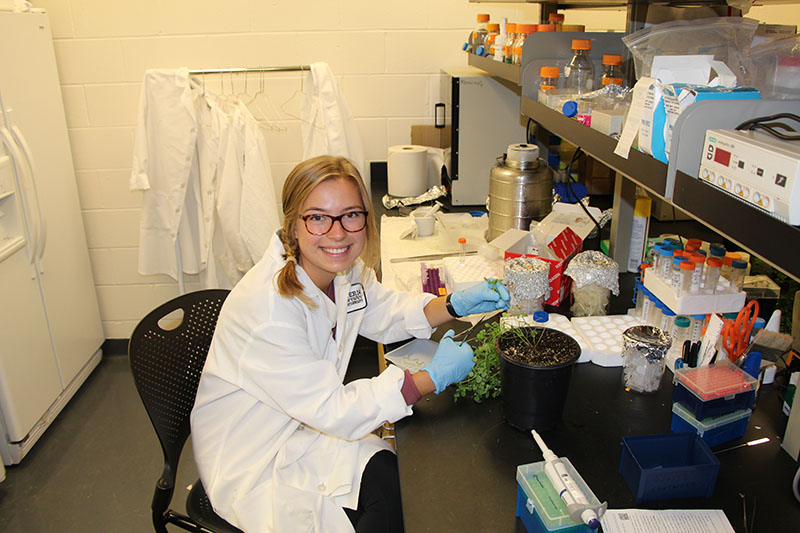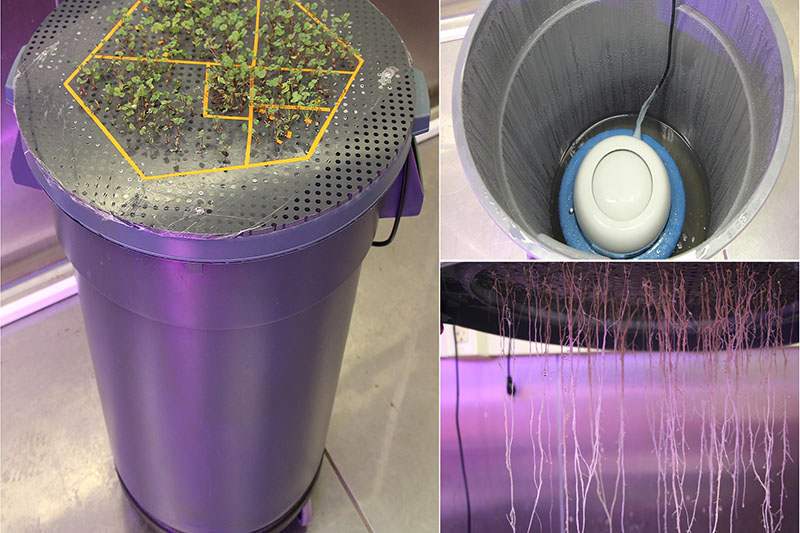- Apply
- Visit
- Request Info
- Give
Biologists publish method for aeroponic system to grow plants that aids researchers
Written by Lucinda Weiss
Published on April 05, 2023
A biology professor at Eastern Connecticut State University and three students who worked in his laboratory have published a research article in a peer-reviewed journal, “Plant Methods,” describing a protocol for growing plants aeroponically to study root growth and plant-microbe interactions.
The aeroponic system described in the paper, called a “caisson,” was invented by an engineer in France in the 1980s, who was studying legume root systems. However, an updated protocol with modifications to build the aeroponic system is not available publicly. Students working for Vijaykumar Veerappan, associate professor of biology, helped to work out and publish step-by-step instructions for constructing the caisson. Matthew Bouthillier, carpentry shop supervisor in the Office of Facilities Management and Planning, helped build the system.
It has some readily available components — a garbage can is the aeroponic chamber — and some that are more exotic, such as an industrial humidifier made by a Swiss company that is placed in the chamber’s base. A garbage can lid, which supports the plants, had to be modified with 800 precisely drilled holes. Bouthillier found a solution for that with a pre-perforated PVC lid, Veerappan said. The system is reusable, adaptable to studying other plant parts and affordable to build.
Since 2016, when Veerappan came to Eastern, four of the aeroponic units have been built, producing up to 800 plants at a time to conduct research.
Aeroponic growing, or growing in air rather than soil, results in clean roots that are convenient for researchers who study the root phenotype, or physical appearance, compared with messy roots pulled from soil. Researchers can extract DNA and RNA and work with many specimens in a small laboratory space. Aeroponics and hydroponic growing, or growing in water rather than soil, allow growers to control the amount and type of nutrients a plant receives and are widely used in agriculture, Veerappan noted.
The students who conducted research using the system are Megan Piechowicz ’23, an honors student who plans to pursue a graduate degree in human genetics and genetic counseling; Kate Arildsen ’22, who is planning graduate research in plant science; and Catrina Sullivan ’22, who is a postbaccalaureate fellow at the National Institute of Neurological Disorders and Stroke, part of the National Institutes of Health. Sullivan’s long-term goal is to pursue a career in medicine.
Veerappan, a molecular geneticist, uses the system to grow a model legume plant, “Medicago truncatula,” known commonly as barrel medic or barrelclover, to study the genetics of how the legume fixes nitrogen. Unlike other plants, legumes such as peas and beans can convert the nitrogen in the soil, or in this case, the air, to ammonia, a nutrient that plants can absorb, through a symbiotic relationship with bacteria. Veerappan creates mutations in genes to produce some plants that are nitrogen deficient. The mutants can be compared with normal plants that he grows aeroponically. They fix nitrogen with bacteria that he injects into the plants’ nutrient solution.
The model plant Veerappan uses needs only four weeks to grow, another advantage for the researchers. The roots are much longer than they would be if grown in soil, still another advantage. They hang down from the plant in long strands that his lab calls “Rapunzel’s hair.”
One of the disadvantages pointed out in his paper is that aeroponic systems likely alter the root physiology of the plant compared with roots grown in soil.
The paper, published in “Plant Methods” on March 3 is “A modified aeroponic system for growing small-seeded legumes and other plants to study root systems.” Veerappan is the co-corresponding author. Other co-authors include Jingya Cai at the University of North Texas, Julia Frugoli at Clemson University, and Rebecca Dickstein at the University of North Texas, who was Veerappan’s postdoctoral mentor. He completed his postdoctoral training there and at Oklahoma State University after earning a Ph.D. in biology at Texas Tech University.
The paper is available in the open access journal.



